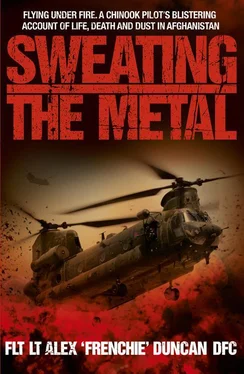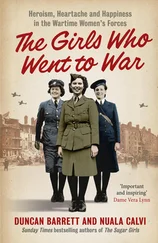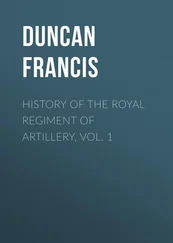The four-month course is broadly similar to the course that civilian pilots do to obtain a Private Pilot’s Licence, except it’s much more comprehensive and the pace of learning is accelerated. You can be flying in formation, hanging off the wing of another aircraft, with around fifteen hours flying under your belt, a time when many PPLs have only just soloed. The training is exceptionally good and despite not being a naturally gifted pilot, I aced all of my final exams and left EFTS with sixty-five hours, experience in my logbook.
Despite now being able to fly a light aircraft in cloud, at night, alone, and perform aerobatics and low-level flying, you’re still of no use to the RAF. EFTS is all about identifying your strengths so you can be streamed to one of three arenas that the brass thinks you’re most suited to, depending on where they have the greatest need at that particular time – fast jets, multi-engine or rotary. Fast jets was my first choice, followed by multis and finally, rotary, which is what I got. I’d sailed through all my exams and handling tests, and I was informed I’d achieved the grade, but there was a problem affecting the Tucano T1, the aircraft on which the RAF teaches basic fast jet flying. It created a huge backlog of pilots, so they looked at my performance and decided I had the aptitude to be a good helicopter pilot.
I was so gutted at first that I even considered leaving the RAF, but ultimately I accepted the decision because I realised it was about what the Air Force needed, not what I wanted. Whatever I flew, be it fast jets or helicopters, I’d love the job because I would still be flying. Maybe a different kind of flying to what I’d dreamed of, but still flying nonetheless.
Because I thought I’d be streamed fast jet, I’d already arranged a holding post with the fast jet test squadron at Boscombe Down. I couldn’t change it, so there was nothing else to do but change my perspective. If I couldn’t be a fast jet pilot in the RAF, at least I’d be able to live the life for a few months and get it out of my system.
So that’s what I did. After a period of leave, I arrived at Boscombe Down in November 2001 for four months. I had the time of my life and can look back on having flown the Jaguar, the Hawk and the Alpha Jet. Although the time I spent in them wasn’t loggable because I hadn’t earned my wings then, it didn’t matter. Firstly, I made loads of memories. Secondly, when you’re talking to mates outside of the RAF, one of the first things they ask you is, ‘Have you flown a fast jet?’ At least now I can say, ‘Yes.’
RAF Shawbury in Shropshire is home to the Defence Helicopter Flying School and the Central Flying School (Helicopter) Squadron; it’s where you come if you want to fly helicopters for the Army, Navy or RAF. So in March 2002 I arrived ready to learn everything I needed to know about rotary-winged aircraft – or helicopters, as they’re more widely known.
At this stage, I really didn’t know a great deal about them, but when I looked at the RAF’s fleet of helicopters I set my sights on the Chinook from the off. There was something different about it. That said, I still felt apprehensive. To me, helicopters were the devil’s machines. I know how fixed-wing aircraft stay aloft but I regarded helicopters as little more than six million separate pieces flying in an unstable formation. So far as I was concerned then, it was aerodynamically impossible for a helicopter to fly, so the only conclusion that I could draw was that they’re so fucking ugly that the earth repels them. I wasn’t sure I could deal with that.
The course began with a month of ground school where we learned the principles of flight and looked at vector diagrams that apparently proved that helicopters can, in fact, fly. I’m sure that anybody with a first in Engineering or Pure Maths could quickly prove otherwise, but the school did a pretty good job of convincing us, so I parked my scepticism and concentrated on the finer points of helicopter meteorology. As ground school progressed, we learned the various checks in a procedural trainer, which is a cardboard mock-up of the cockpit. The needles on the dials move and the sim makes all the relevant noises, but it’s just to get you used to where everything is. Eventually, we actually started walk-arounds so we were up close and personal with this mythical flying beast.
It was a single-engine Eurocopter Squirrel HT1 – the ideal platform in which to learn the rudiments of helicopter flying, according to the RAF. The engine is tiny – about 2ft long by 11 inches high – but it’s worth about a million pounds, so there’s clearly more to it than simple pistons. It must be all the pixie dust that they put in there to keep the thing aloft.
Everything about the Squirrel is small and light – you can lift the tail with a finger because it’s plastic, thin and very, very light. The blades are no more than five inches wide, yet they spin at 225rpm and somehow keep you airborne. One thing you don’t want is to see the engineers working on the tail rotor before you fly, because if you do, you’ll see the transmission tube that runs the length of the boom to keep the tail rotor spinning, which is no more than finger-thickness and spins at 1,000rpm. It really is best not to think about it too hard.
My first actual flight in it is a familiarisation one with an instructor, and it’s the only free ride on the course. There were three of us riding along for that. The instructor walked out to the line, helmet on, dark visor down. Standing there before me and my two fellow students he assumed almost mythical status, for he can fly this thing.
So, picture this… we get in – I’m in the back and I just can’t compute how we’re going to get airborne with four adults inside. The instructor runs through his checks and starts the aircraft, his hand whizzing around the cockpit. He reaches to his left and pulls on a lever that looks just like the handbrake in my car and suddenly we’re in the air. We go straight up, taxi in between some other helicopters, fly gently over the grass on the airfield, turn through 180° to make sure there is nothing behind, and off we go. Down goes the nose and we are flying. I’m dumbstruck because it feels just how I’d imagine a flying carpet would feel.
For someone schooled in flying fixed-wing aircraft, it meant a whole new frame of reference and an entirely new way of thinking; if anything goes wrong, for example, you don’t have to find a runway, you can just slow down, find a field, and hover. And you could just hover there for hours, beating gravity. Once I’d accepted the concept, I realised that it opened up entirely new horizons in flying. I must confess that all my previous misgivings melted away as we flew, and I actually began to think, ‘Hey, this is pretty cool.’ I couldn’t believe I’d actually considered leaving the RAF. This tiny glimpse of rotary-winged flight showed me there was nothing to regret; it was going to be good – real good!
My instructor was John Garnons Williams (John GW to us), and he was awesome. He was an old boy, a retired Wing Commander – very well educated, a very, very good pilot and an absolute gentleman to boot. It was a privilege to know him and I was deeply saddened to hear that he died in a training accident in January 2007.
I felt reasonably confident about my first lesson. I mean, how difficult could it be? I’d just finished a month of ground school so I was more than familiar with the functionality of the flight controls. And I knew all the theory: basically, the controls in a helicopter affect the rotors – rotating blades on top of the fuselage, and a tail rotor at the end of the boom. The four blades on the roof are essentially rotating wings – rotary wings – and form a disc. It’s the disc that flies; the rest of the helicopter simply follows along.
Читать дальше













